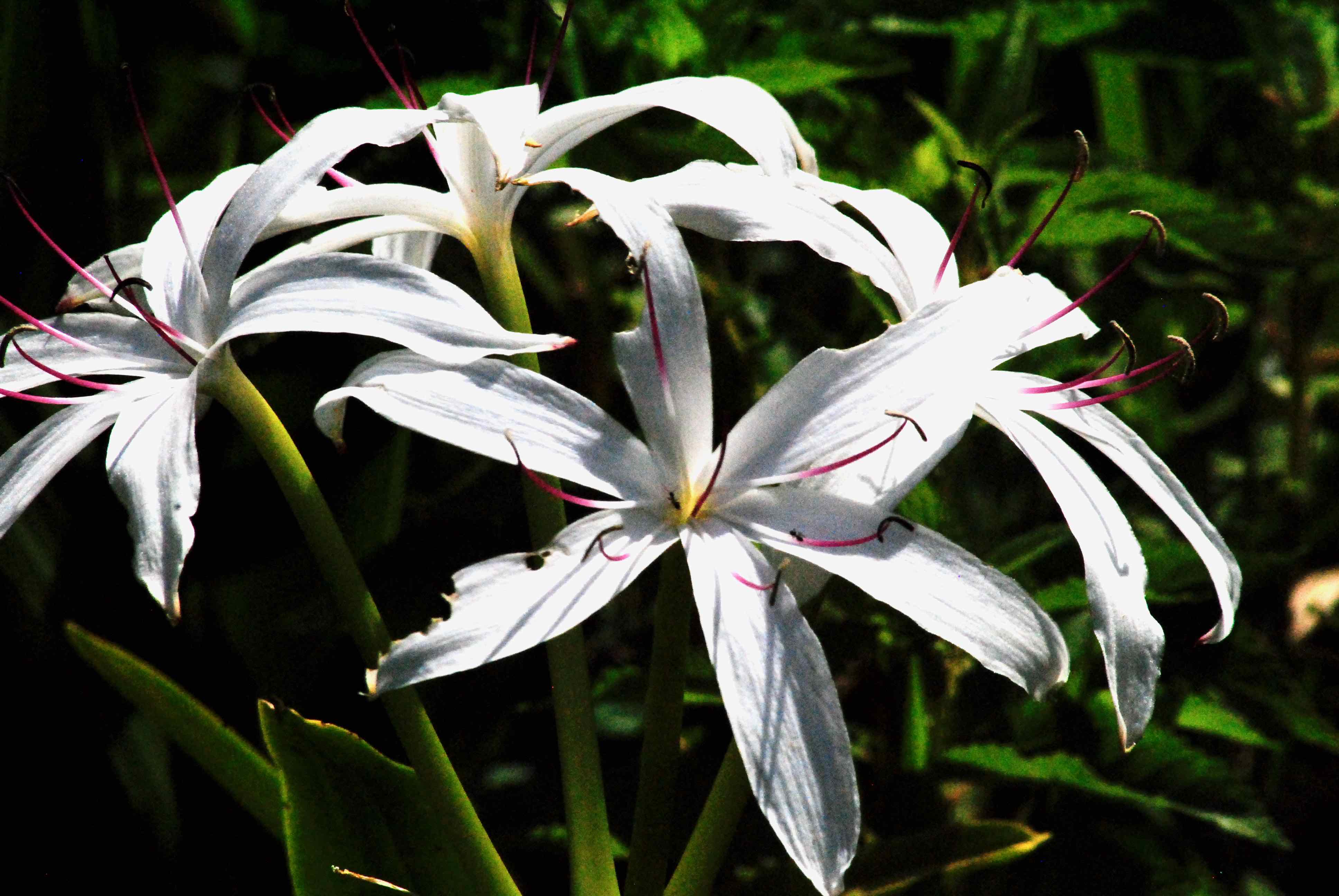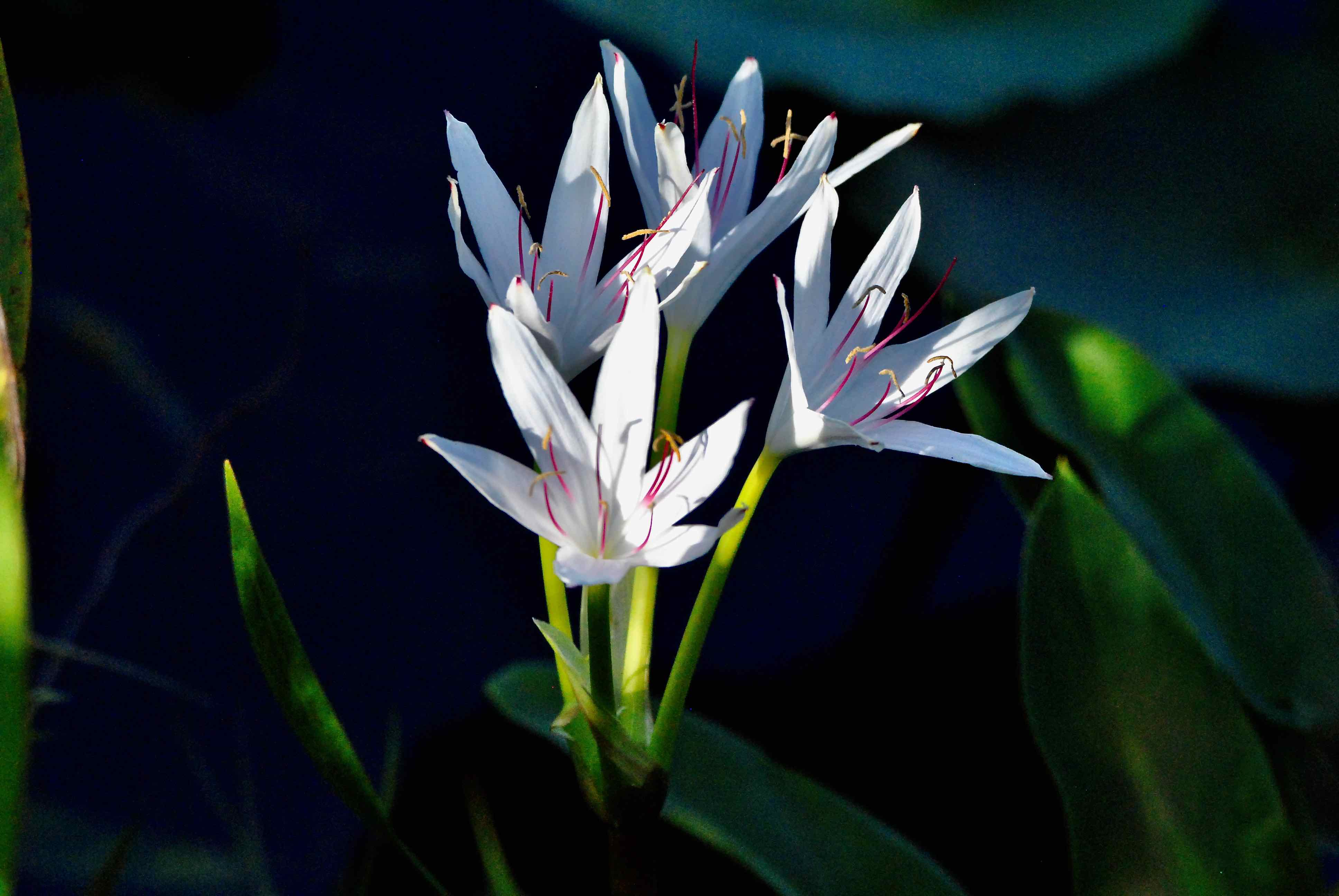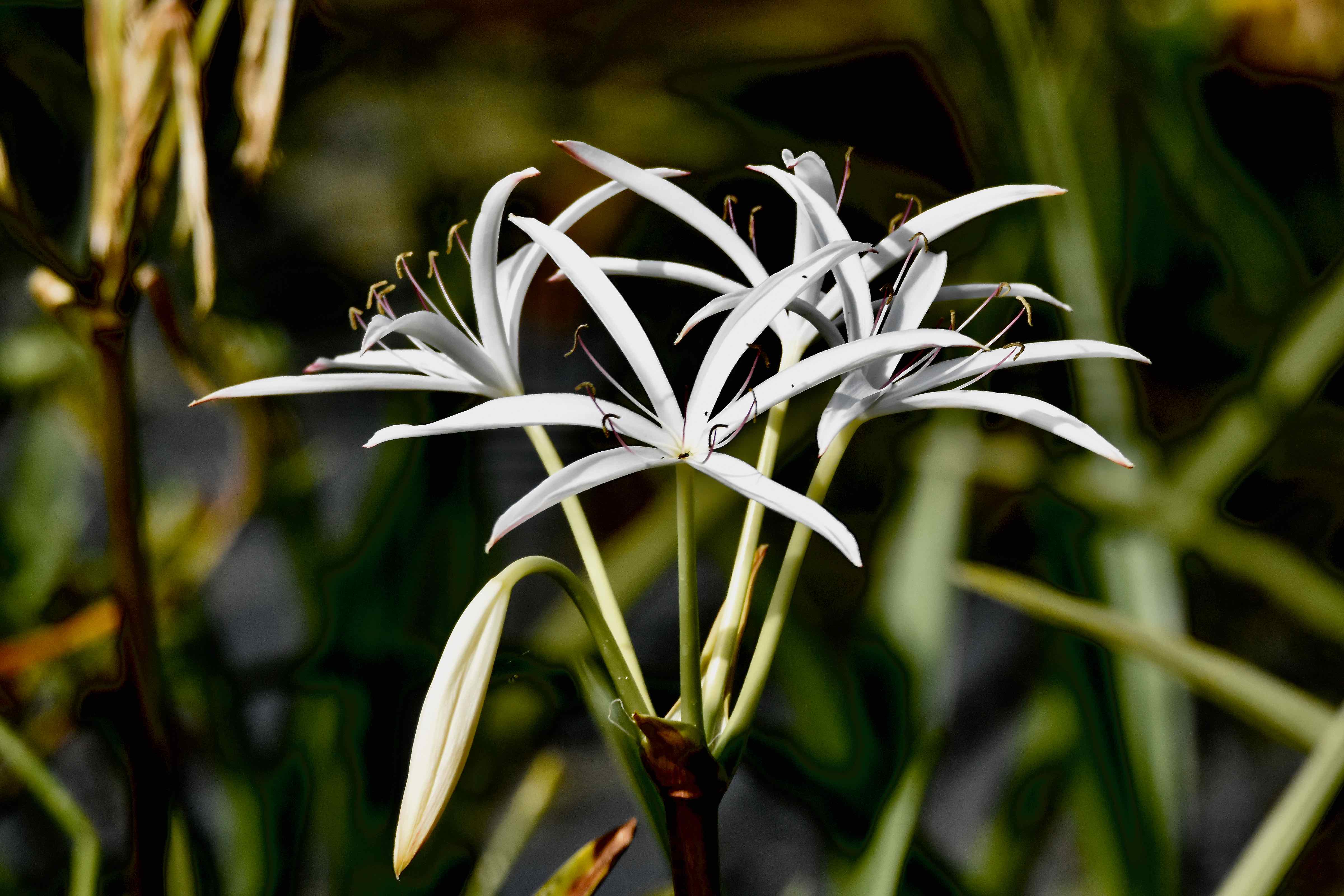
Swamp lily, photographed at Shark Valley, Everglades National Park, Miami-Dade County, in May 2014.
If one were to put together a list of the most beautiful of Florida's wetland plants, swamp lily, Crinum americanum, would definitely make the cut. Add fragrance to the list of qualifiers, and this flower might be the winner.
It's a Florida native commonly found in wet habitats — wetlands, moist hammocks and along streams and rivers throughout much of the Sunshine State. It's one of four members of Crinum that are found in Florida, but the only one that's native to the state and likely the only one that's to be encountered in the wild. Its native range includes a good chunk of the southeastern United States, from North Carolina to Texas, with Arkansas thrown in for good measure. It's also found in Cuba and Jamaica.
Swamp lily might be confused with spider lilies (there are actually several species of spider lilies). They both grow in similar habitats, and, absent their flowers, closely resemble each other, with long, strap-like leaves. Both have flowers with six bright white petals, but that's where the similarities end. similar habitats. Spider lilies have a distinct membrane connecting the petals that swamp lilies lack. The two are members of the same plant family but are in separate genera. While we're on the subject of confusion, we should mention that came across at least a half dozen plants that have swamp lily as a common name, including one we call fire flag, which in no way resembles a lily, and a cousin to our guy scientifically called C. pendunculatum. Stick with C. americanum and you can't go wrong.
Back to botanical basics: Swamp lilies have strap-like leaves that can be three feet long or more and three inches wide. They arise from the base of the plant like rosette. The leaves can be erect or flop over and the margins are "entire," meaning the edges are smooth and have no teeth or lobes.
Swamp lily grows in small clumps. Underground is a large, fleshy onion-like bulb from which the leaves and flower stalk emerges. The stalk can be a foot to three feet tall, topped with a cluster of large, white or white-pink flowers arranged umbrella-like. The stalk can have as few as two and as many as seven flowers (typically four), each with six seperate petals and sepals, and purplish, fliament-like stamen that arise from the flower's throat.
Bloom time for swamp lily is spring through fall in cooler parts of its range, year round in South Florida. It also goes dormant in winter in the north. The fruit is a fleshy, green pod. Swamp lily flowers are also known for their sweet scent.
The white color and shape of the flowers, plus their fragrance tells you that swamp lily is pollinated by hawk moths. But it also attracts an array of bees, wasps, beetles and flies. Spanish moths, in fact, use it as a host plant for their larvae. And the leaves are a favorite food of the ravenous eastern lubber grasshopper, which can devour an entire plant.
Swamp lily is sold by nurseries and used in gardens, but as you might guess, it needs wet soil in order to thrive. It has limited ability to withstand drought. It also likes full sun but will grow in shade. It is moderately salt-tolerant. It can be grown from seed or by dividing plants. It's also a long-lived perennial.
In other parts of the world, especially in Africa and Asia, crinum species have been used in traditional medicines to provide a multitude of remedies. They're particularly rich in a group of chemicals called Amaryllidaceae alkaloids that have a variety of medically useful properties, at least in lab studies, including the ability kill and inhibit the growth of microbes. Other crinum species have been examined by researchers, and swamp lily has gotten their attention too.
Other common names for swamp lily include string lily, seven sisters, crinum lily and southern swamplily (sometimes spelled swamp-lily). One fun fact: it's called seven sisters because some say the shape of the flower clusters resemble the shape of the Pleides, a star cluster found in Orion's belt, according to noted naturalist Roger Hammer. One other name-related factoid: Crinum is Greek for lily and Americanum is of America. What you have is lily of America. That makes the common name crinum lily redundant.
Swamp lily is a member of Amarylidacaea or the amarylis family. Some, including the U.S. Department of Agriculture classify swamp lily as a member of Liliaceae, the lily family.
Click on photo for larger image
U.S. Department of Agriculture Distribution Maps
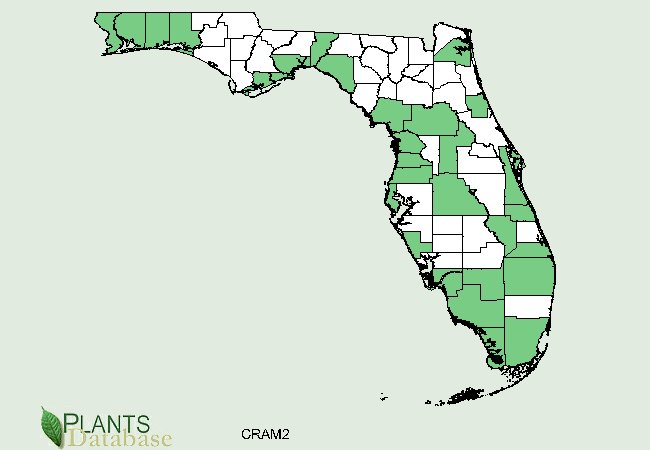

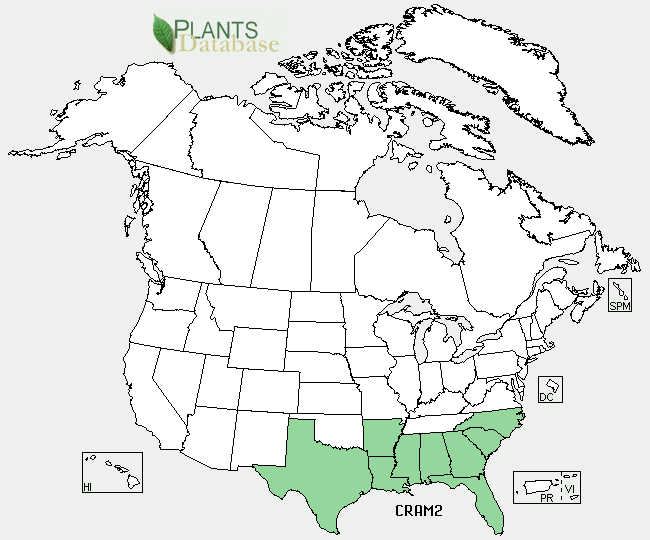
Links for Swamp Lily

